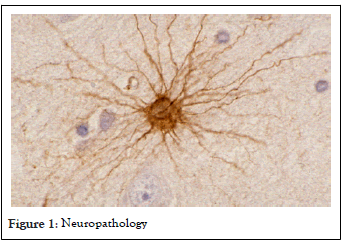Journal of Medical & Surgical Pathology
Open Access
ISSN: 2472-4971
ISSN: 2472-4971
Image Article - (2020)Volume 5, Issue 3
Neuropathology is the study of nervous system tissue disease typically in the form of either small surgical biopsies or autopsies of the whole body. A basic understanding of the pathology of the nervous system is integral to providing high-quality, safe, evidence-based care to neurologically ill patients.
Neuropathology; Alzheimer's disease; Parkinson's
Neuropathology is the study of nervous system tissue disease typically in the form of either small surgical biopsies or autopsies of the whole body. A basic understanding of the pathology of the nervous system is integral to providing high-quality, safe, evidence-based care to neurologically ill patients. In the area of critical care medicine this is particularly important. Although the way disorders can affect the brain and spinal cord is quite varied (as are clinical and radiological disease manifestations), specific structural features of the central nervous system give rise to unique vulnerability patterns that produce reproducible morphological patterns of neuropathology. Many types of neurological changes are peculiar to the nervous system, such as demyelination and neurodegeneration, while others may have common structural and functional effects on the brain and spinal cord, such as trauma, neoplasms, and vascular disorders occurring elsewhere in the body. Neuropathology plays a crucial role in characterizing neurodegenerative disease pathogenesis like types of neurodegeneration with an accumulation of brain iron (NBIA). Despite major variations, in addition to iron deposition, many genetically diverse types of NBIA also share similar characteristics, such as the presence of neuroaxonal spheroids. Various examples of NBIA also display tau or synuclein pathology, indicating similarities with both Alzheimer's disease and Parkinson's. This chapter summarizes what was learned from human patient tissue analysis. Gross and microscopic observations are delineated and they present similarities and differences between types of NBIA. The results of neuropathology also help to characterize the basic features of the condition and provide a springboard for more oriented research based on hypotheses. Therefore, insights learned from neuropathology add a great deal to the analysis of disease molecular mechanisms (Figure 1) [1,2].

Figure 1: Neuropathology
Citation: Chowdary D (2020) Neuropathology is the Study of Nervous System Tissue Disease. J Med Surg Pathol. 5:181.
Received: 01-Aug-2020 Accepted: 08-Aug-2020 Published: 17-Aug-2020 , DOI: 10.35248/2161-0495.20.5.181
Copyright: © 2020 Chowdary D. This is an open-access article distributed under the terms of the Creative Commons Attribution License, which permits unrestricted use, distribution, and reproduction in any medium, provided the original author and source are credited.